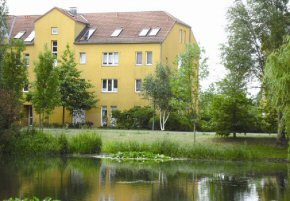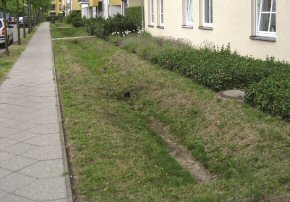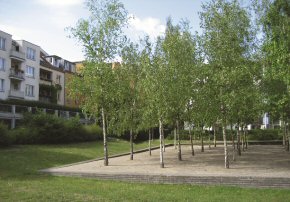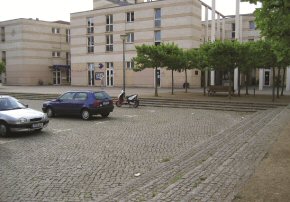WSUD in Kirchsteigfeld, Germany
Kirchsteigfeld is a large residential area with more than 2,600 apartments which was established in the early 1990s. Since the project began, the emphasis has been on giving the area a coherent identity and finding a solution which integrates existing landscape elements, including the "Hirtengraben" watercourse. The master plan requires rainwater to be managed by means of green solutions. Most of the rainwater is infiltrated as the soil in the area is made up mainly of sand. Roof water and water from path systems is collected and managed in separate infiltration areas in the courtyards for the blocks. The infiltration areas vary in design and function as playgrounds and shelters, among other things. Overflow from the courtyards is fed via overflow structures to the streets, where the water is retained, infiltrated and evaporated from what are known as swale-trench systems. Overflow from these swale-trench systems is collected in the Hirtengraben watercourse, which feeds all the water to a central collection and treatment basin which discharges to the open landscape. The basin helps to create the local identity of the area. Rainwater from roads used by traffic is fed through pipes and a treatment element directly to Hirtengraben and the collection basin.
Photos




